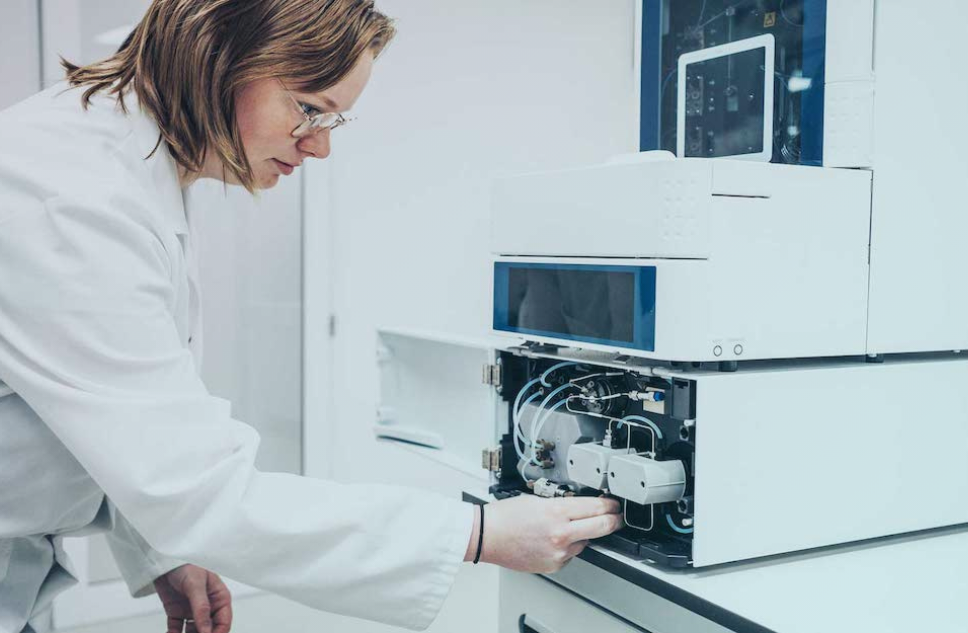News & Blogs
Stay updated with the latest news, insights, and expert blogs from Emixa. Explore industry trends, digital innovations, and company updates all in one place.

- Manufacturing
- Mendix
- +2
Maximise production with Overall Equipment Effectiveness (OEE)
Overall Equipment Effectiveness (OEE) is a common Key Performance Indicator within industry, which compares actual production output with the maximum capacity of production processes.

- PLM
Coherent Project Documentation with Polarion
Spark Holland is a supplier of innovative sample introduction, extraction, and separation technology for analytical systems such as HPLC, MS, GC, and NMR. Spark gathers user feedback and seeks to understand typical issues in the analytical laboratory, focusing on product development towards simplicity and reliability. To create products that prioritise simplicity and reliability, it's essential to use a user-friendly, open, and easily understandable tool for requirement management. Shifting away from disjointed documents and spreadsheets, which previously formed the foundation of requirements management, became a challenge as projects grew more complex, making traceability nearly impossible. In a proof of concept, Polarion not only addressed the traceability issue immediately but also led the team to reevaluate the development process, resulting in a simplification step. Polarion Application Lifecycle Management enables teams to collaborate easily and securely on shared documentation. You can define who can see what, who can make changes, and when, through detailed permissions and robust configurable workflow automation. Additionally, Polarion has an FDA-approved electronic signature process. "Emixa Industry Solutions has consistently demonstrated expertise and reliability in addressing our Product Lifecycle Management needs over the years. Including them in our shortlist of vendors was a logical choice due to their knowledge and ability to meet customer requirements precisely. Their extensive partner network enables them to address any gaps in demand." - Nils Reuvers, IT Manager at Spark Holland B.V. The implementation of Polarion has resulted in more streamlined, improved, and cohesive project documentation with comprehensive, readily accessible traceability, all while minimising administrative overhead. Polarion has facilitated easier compliance with legal standards and regulations, creating clarity and improving the working process within product development. Want to learn more about this? Contact us.

- Boomi
- ERP Software
SPIE Netherlands Discovers the Benefits of Boomi
Both large enterprises and SMEs nowadays increasingly use smart applications to manage and improve their business processes. These applications also need to communicate with existing (on-premises) systems. Establishing such integration can be a significant challenge. Boomi provides a solution, helping to quickly and easily connect all applications and system components. One company that has discovered the benefits of Boomi is SPIE Netherlands. We spoke with Ad van Oorschot, project manager at SPIE Netherlands, about the implementation of Boomi and the collaboration with Emixa.

- Mendix
Manufacturing Menu: Ensuring Safety & Health with the Right Technology
We live in an era where corporate social responsibility (CSR) holds a prominent place on the priority lists of companies and regulatory bodies within the manufacturing industry. As requirements become increasingly stringent and expectations higher, safety, health, and environmental consciousness collectively form a key ingredient of Emixa's Manufacturing Menu.

- IT
- IT Strategy
- +1
Time for a Spring Cleaning? How to Make Your IT Smarter and More Secure
Does this sound familiar? Over the years, your IT landscape has mushroomed, but now you’ve lost track of what’s in place. You discover duplicate licences, underused applications, complex customisations, and systems that don’t integrate well. Meanwhile, costs and frustrations keep piling up. Many organisations struggle with unchecked growth in IT due to a lack of a clear IT strategy. This leads to inefficiencies, unnecessary expenses, and even security risks. It’s time for a spring cleaning!

- ERP Software
Emixa helps GVB on its journey towards data-driven maintenance
Consultancy.nl, the platform for the consulting industry, published an article about our work for Amsterdam's public transport company GVB. How did we support GVB in getting ready for a data-driven future?

- Applications
- Mendix
What is LEAN Manufacturing?
Lean manufacturing, also known as lean production, is a method of making production processes more efficient by reducing waste and optimising workflows. This is done by systematically analysing and continuously improving each part of the process. The aim is to use materials, time and labour as effectively as possible, leading to lower costs, higher productivity and better quality. A commonly used technique within lean is Just in Time (JIT), but both methods have a different focus. Lean focuses on optimising the entire production process and operational management, while JIT is mainly about smart inventory management. Although they are not the same, they complement each other. Many Lean tools, such as streamlined production flow, are used to achieve JIT goals. Both methods help companies minimise waste and create more value for customers.

- PLM
The Digital Shopfloor Scan: Uncover Operational Improvements
The manufacturing industry is under increasing pressure to operate more efficiently, flexibly and competitively. Digitalisation plays an important role in this, but many companies struggle with the question of how best to tackle this transformation. Where to start? Which processes offer the most room for improvement? The Digital Shopfloor Scan helps you answer these questions.

- ERP Software
Comfort Partners' Story: Getting Smarter Every Day with Data-Driven Working
Installation and maintenance company Comfort Partners represents a new generation of craftsmanship. We sat down with Roderick Soesman, who has been the company’s Managing Director for the past four years. What kind of transformation has the business undergone? How do they manage to work a little smarter every day using a data-driven approach? And what role does Emixa play in that journey?